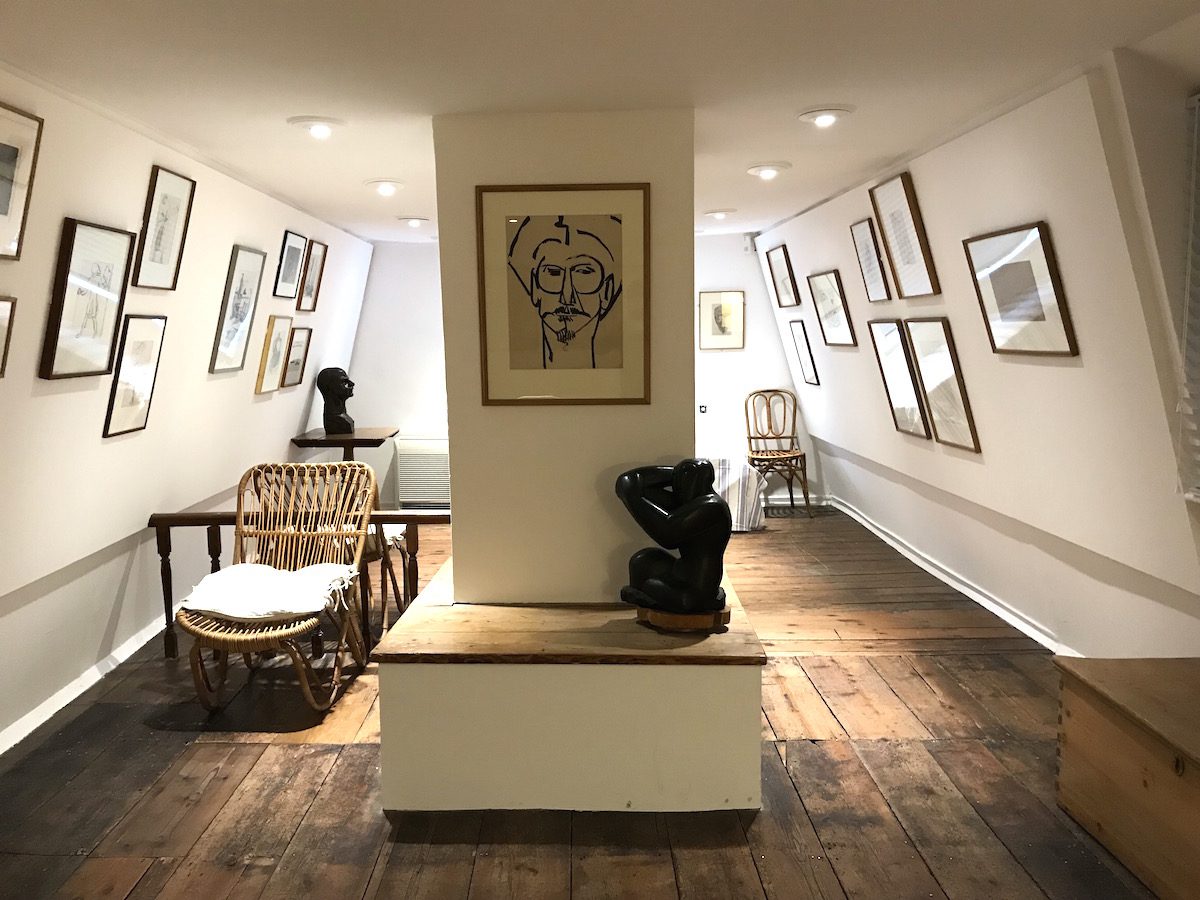Kettle’s Yard in Cambridge reopens this week after a two-year redevelopment programme by Jamie Fobert Architects which includes major new exhibition galleries, generous education spaces and a cafe. Fobert is the new favourite architect of the museum world. Last year saw his completion of the extension at Tate St Ives, and he has just been appointed to undertake the £35.5m transformation of the National Portrait Gallery.

Kettle’s Yard is often cited as everyone’s favourite gallery: an exceptional place illustrating how to display a very personal collection of paintings, objects (both found and acquired, natural and man-made), ceramics, glass, furniture, textiles and books. It began life in 1957 when Tate curator Jim Ede and his wife Helen, opened the doors of their house every afternoon for people to view their remarkable collection. A collection which included works by Ben and Winifred Nicholson, Alfred Wallis, Christopher Wood, Henri Gaudier-Brezeska, Constantin Brancusi, Henry Moore, Barbara Hepworth and Naum Gabo. In 1966, Ede gave the House and its contents to the University of Cambridge. The house was extended and an exhibition gallery added in 1970 by architects Sir Leslie Martin and David Owers.

Fobert’s development seamlessly blends with the existing space and succeeds in complementing and enhancing the qualities of the original house. Natural light was always crucial to the house, and this has been continued with the renovation. The new elements include a new entrance and spacious welcome area which provides unobstructed access to all the different elements of Kettle’s Yard – the original House, the old and new galleries, the new education spaces, archive and research space, a new shop and a new cafe. The new fully accessible education wing has been expanded incorporating a double-height Clore Learning Studio with generous spaces at basement level. The street-level windows look over three sculptural trees which in keeping with the rest of the gallery link the building with its surrounding area. Two spacious new gallery spaces have been built, suitable for displaying larger works plus s small display space allowing art to be viewed from the street.

The opening exhibition, Actions: the image of the world can be different is a group show featuring new and existing work by 38 artists. The title is inspired by a letter Naum Gabo wrote to Herbert Read in 1944, in which Gabo reasserts the potential of art as a poetic, social and political force in the world and his belief that “the image of the world can be different”.
Actions brings together works across a variety of forms and media made by artists of different generations, from the emerging to the renowned. The exhibition features work by 38 artists including nine new commissions by Rana Begum, Jeremy Deller, eL Seed, Idris Khan, Issam Kourbaj, Harold Offeh, Melanie Manchot, Cornelia Parker and Caroline Walker.

In the new gallery spaces, visitors encounter iconic works by Richard Long, Ben Nicholson and Mary Kelly, with new and recent work by Julie Mehretu, Oscar Murillo, Regina José Galindo and Linder among others. There is also a wall of powerful and poetic photos by Khadija Saye, the young artist who tragically lost her life in the Grenfell fire last summer. The four works explore traditional Gambian spiritual rituals as a means of healing. As a young black woman living in London, Saye wrote of how her life, her Muslim and Christian heritage and her own faith were embedded within her art: “Using myself as the subject, I felt it necessary to physically explore how trauma is embodied in the black experience”.
Mary Kelly’s Love Songs: Flashing Nipple Remix, 2005 is a display of three black and white transparencies mounted on lightboxes which record a re-enactment based on a snapshot of a street theatre protest that took place outside the Miss World Contest held at the Royal Albert Hall in 1971. The re-enactment was carried out by five women dressed in black and wearing the same lights as the original protestors. Idris Khan has created a new site-specific installation using repetitively stamped extracts from Naum Gabo’s 1944 letter and Herbert Read’s reply. Superimposed printed marks build up layers of words and phrases and symbols on the surface of the paintings.

For the Kettle’s Yard House, Cornelia Parker has made a new drawing on the two window panes in Helen Ede’s bedroom. Drawn with chalk from the white cliffs of Dover, Parker uses the material of this iconic landmark to evoke notions of identity and home. When the Edes lived at Kettle’s Yard, Helen grown-up daughters beset by poor health would spend time in her light-filled room for recuperation. Parker’s subtle intervention draws our attention to windows as physical and emotional frontiers. The tear-shaped marks both conceal and reveal the view beyond and reflect the changing light.
Edmund de Waal has two small wall-hung vitrines with porcelain vessels placed alongside the permanent collection. These poetic and open-ended compositions of objects mirror the care Jim Ede took with the selection and positioning of every artwork and object with the House.

Rana Begum has created a new large-scale installation for the church of St. Peter’s next to Kettle’s Yard comprising of a thousand bamboo baskets hand woven in Bangladesh. They form a weave-like structure that visitors can walk beneath. The work draws upon the artist’s childhood memories of basket weaving in her village in Bangladesh, as well as time spent reading the Qur’an at the local mosque, where the dappled morning light, sound of the water foundation and the mesmeric recitation created an atmosphere of peaceful concentration.

In the churchyard attached to St Peter’s Nathan Coley presents an illuminated sign on scaffolding bearing the words The Same For Everyone. Coley’s structures and white lights are reminiscent of fairground signs suggesting the celebration. In contrast, the messages they convey are unexplained, anonymous and enigmatic.
Kettles’ Yard opens to the public on 10 February 2018.
Actions: the image of the world can be different continues until 2 April 2018. FREE

